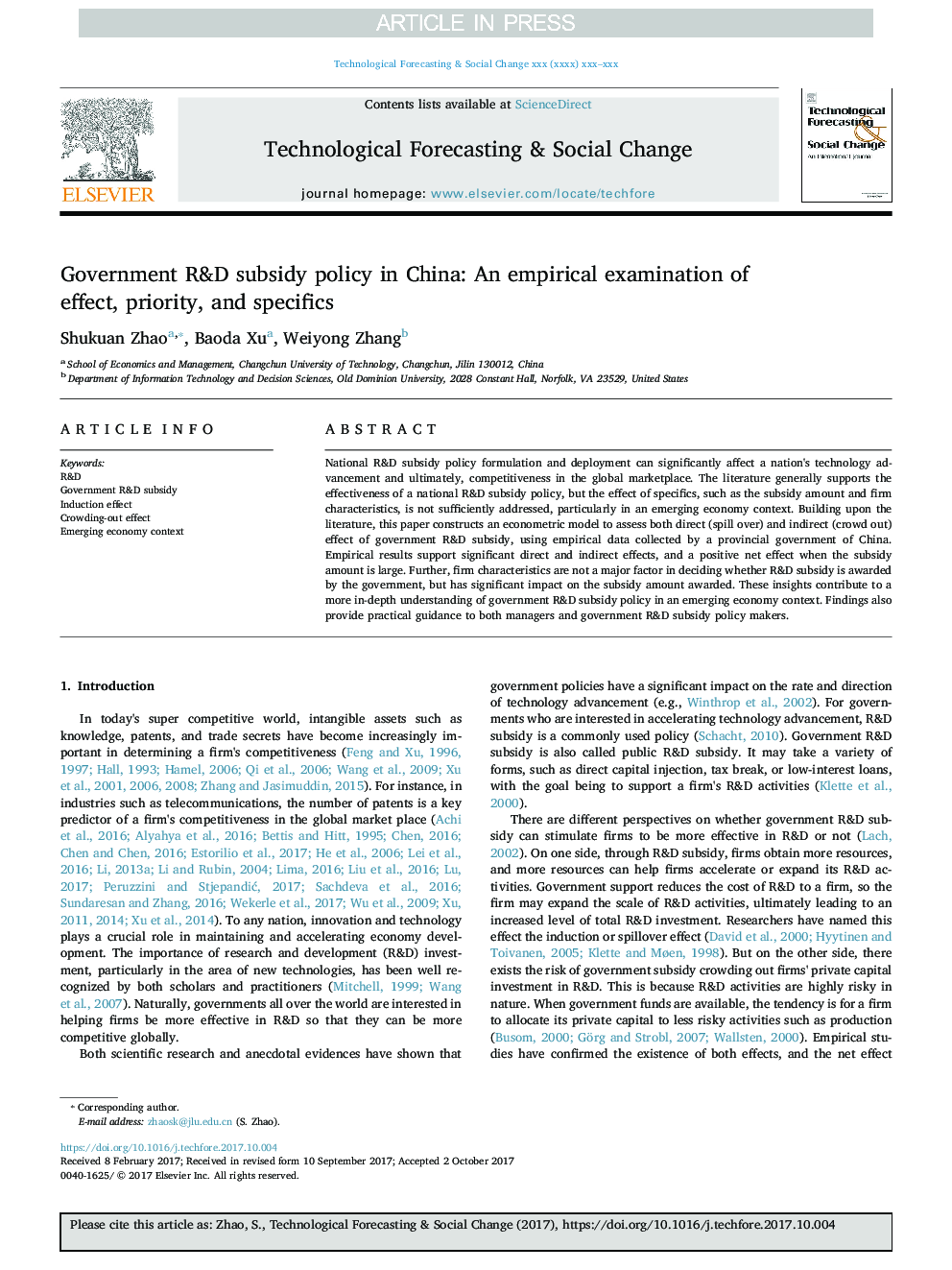| Article ID | Journal | Published Year | Pages | File Type |
|---|---|---|---|---|
| 9952887 | Technological Forecasting and Social Change | 2018 | 8 Pages |
Abstract
National R&D subsidy policy formulation and deployment can significantly affect a nation's technology advancement and ultimately, competitiveness in the global marketplace. The literature generally supports the effectiveness of a national R&D subsidy policy, but the effect of specifics, such as the subsidy amount and firm characteristics, is not sufficiently addressed, particularly in an emerging economy context. Building upon the literature, this paper constructs an econometric model to assess both direct (spill over) and indirect (crowd out) effect of government R&D subsidy, using empirical data collected by a provincial government of China. Empirical results support significant direct and indirect effects, and a positive net effect when the subsidy amount is large. Further, firm characteristics are not a major factor in deciding whether R&D subsidy is awarded by the government, but has significant impact on the subsidy amount awarded. These insights contribute to a more in-depth understanding of government R&D subsidy policy in an emerging economy context. Findings also provide practical guidance to both managers and government R&D subsidy policy makers.
Related Topics
Social Sciences and Humanities
Business, Management and Accounting
Business and International Management
Authors
Shukuan Zhao, Baoda Xu, Weiyong Zhang,
